- Home
- slideshows
- miscellaneous
- I toured Amazon's massive, robot-powered warehouse that serves New York City - these are the 6 incredible little details that stood out
I toured Amazon's massive, robot-powered warehouse that serves New York City - these are the 6 incredible little details that stood out
1. Non-perishable items, 18-inches or under.

2. There are real people using their judgment when packaging your stuff.
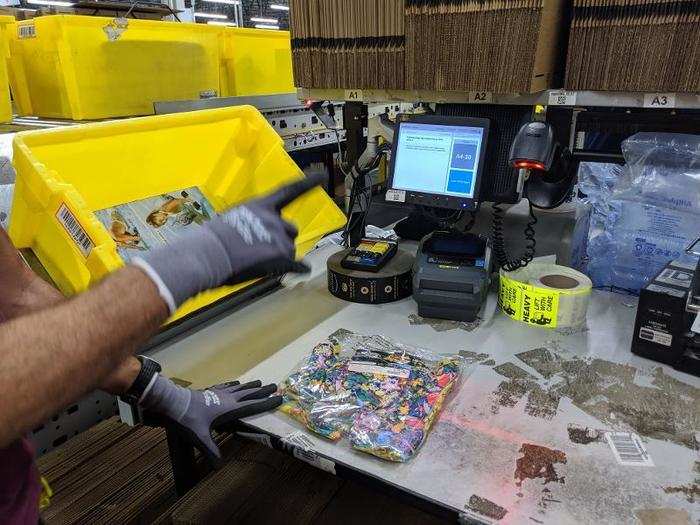
Major portions of Amazon's fulfillment center are automated — large sections where robots whisk hundreds of pounds of products at high speeds across vast swaths of space, where boxed products stream down chutes to expectant conveyor belts, and few (if any) people are involved.
But some products at this Amazon fulfillment center, which serves the New York City metro area, still get hand-packed.
As one packer named Peter said, "I like to make sure the boxes are done the way I would like to receive a box."
3. The robot ballet really is something to see.

It's impossible to see in a still image, of course, but you'll have to take my word for it: The robot ballet, seen above, is mesmerizing.
Some evidence of what's happening can be seen on the floor, where their dance moves are laid bare in a series of geometrically perfect tracks. After so many turns around the floor since this facility opened in late September 2018, the marks on the floor are evidence of the work they've been doing: hauling hundreds of pounds of products here and there, in an endless series of calculations involving an array of constantly shifting factors.
Simply speaking, these robots serve as the product categorization system for the entire facility.
Each of the compartments in the yellow stack holds various products that have been inventoried and stored by a person in stowing, and each stack can weigh up to 1,500 pounds in total per robot. When a customer orders an item, the whole stack is brought to another person who removes the item from its holding place and ships it to your home.
Now multiply that series of actions by millions of people ordering millions of different things that are all going millions of different places, and you get the complex dance of robots above.
It's a system known within Amazon as "random stow," and it's been in place for years — but now it's automated.
Here's a look at the robots by themselves:
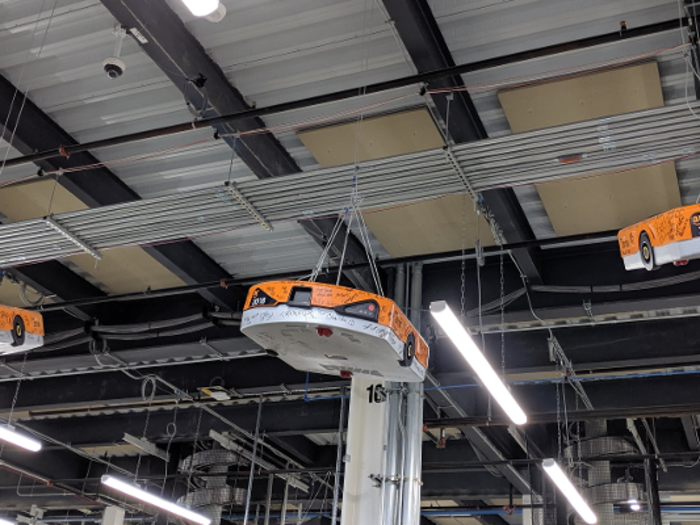
These little guys get underneath those large yellow stacks of storage compartments, lift them up, and then move them wherever they need to go. The robots weigh around 300 pounds each, and can carry up to 1,500 pounds.
4. An automated system using a colored light projector (upper left) highlights the best places to stow items.
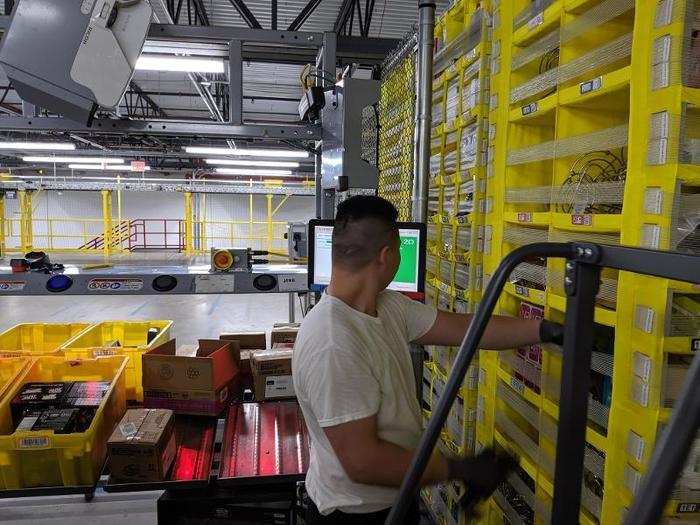
When an item arrives at this Amazon fulfillment center, it gets scanned into inventory then stowed into a "pod" — the compartments seen above on the right. But which pod to put them into?
A system of colored lights shows the person stowing the item some different options, automatically, using a light projector from Ricoh.
It's a brilliantly simple way of saving time, and offers a sharp insight into how Amazon is able to rapidly ship so many items: Simplifying the subtask of stowing categorization speeds up the overall stowing process and makes the employee's task that much more streamlined.
The employee is still making their own choices based on the options those lights present, and can override those options if need be — it just makes the whole process a little bit smarter.
5. This gentleman wearing an array of tech gear, which lets him walk among the robots.
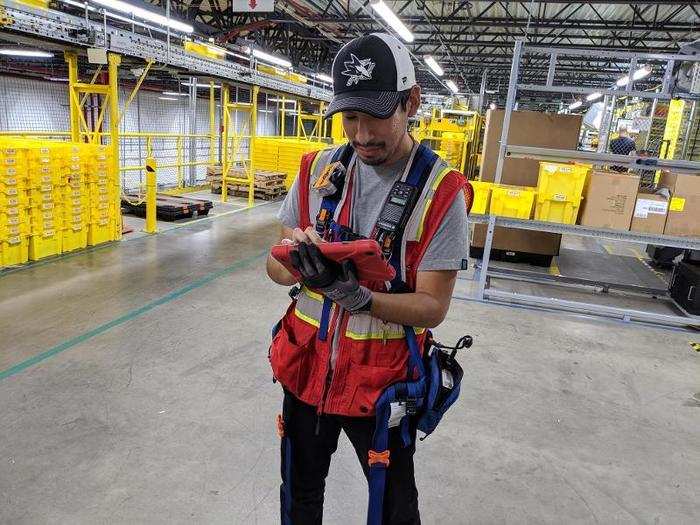
On each of his hips, a computer; on each shoulder, tech for communicating with people (a walkie-talkie) and with robots (a flashing light). And in his hands is a tablet that shows a virtual display of the area in the warehouse where robots are.
The cyborg you see above is actually just a nice guy named Anthony who works as an "Amnesty Tech" at the Staten Island fulfillment center, and all that gear enables him to walk among the massive stacks of products being hauled by robots.
As he explained, sometimes items fall onto the floor from where they were stowed. When that happens, sensors alert the Amnesty Tech team and someone is sent to retrieve the item.
As the robots get within a radius around him, because of the tech he's wearing, they slow down and stop. And on his tablet — an Amazon Kindle, of course — he has a virtual layout of the floor with an array of visual data.
Good luck, Anthony!
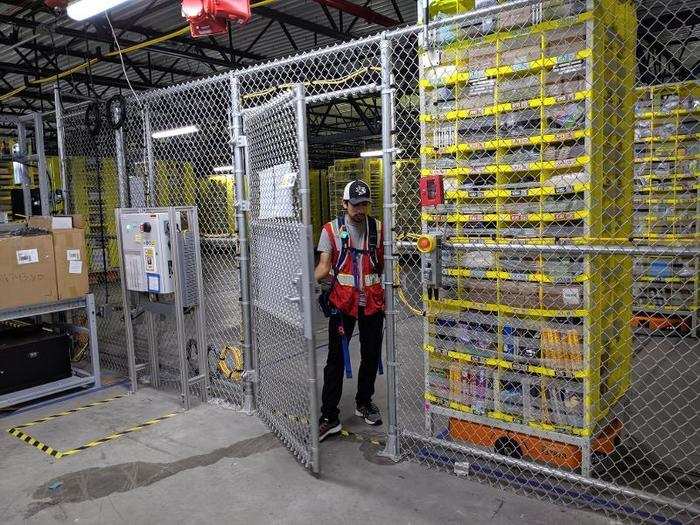
6. For all the modernization, and automation, and robots, shipping products in 2019 still means using wooden pallets.
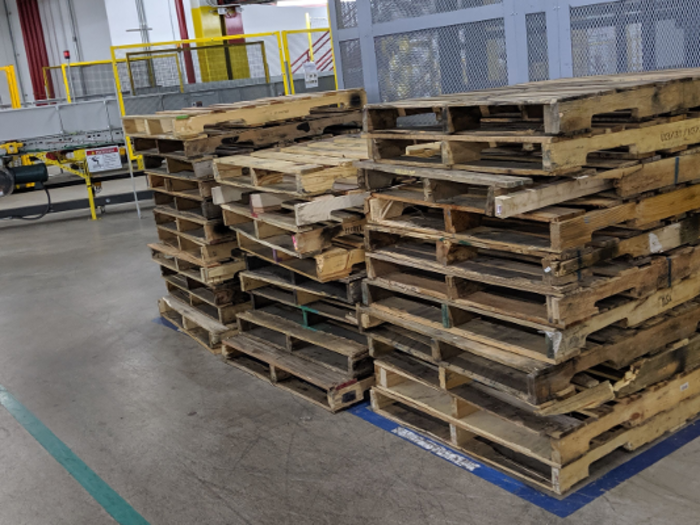
For all the smart little efficiencies and automated systems and simplified processes, shipping products in 2019 still means using these old-fashioned wooden pallets.
The last thing I expected to see in this facility was shipping technology from a previous century, but that's still the standard — even at Amazon.
Popular Right Now
Popular Keywords
Advertisement